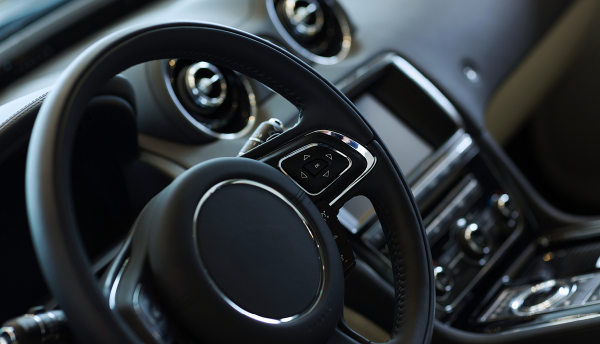
Increased vehicle safety and connected car demand from consumers drives growth
Bosch has announced a new a lane changing assist technology that receives information it needs from the new mid-range radar (MRR) sensor for rear end applications. The company is supplying the technology to a European automaker for use in one of its high-volume mid-size vehicles. The system uses two MRR sensors in rear bumpers, one on the left and one on the right. Control software collates the sensor information to produce a complete picture of all traffic in the area behind the vehicle.
The announcement is another move to capture a share of the growing sensors market. Bosch is a major supplier of MRR sensors for both front- and rear-end applications. The company uses the MRR sensor for front-end applications such as Adaptive Cruise Control (ACC) and predictive emergency braking systems. According to the company, apart from lane changing assist, the MRR rear end can offer other solutions as well. These sensors also forms part of the company cross-traffic alert system which supports drivers reversing out of perpendicular parking spaces when their rear view is obstructed.
Sensors being developed for every aspect of vehicle management
The value of the market for automotive sensors in vehicles is set to dramatically increase over the next decade, with a number of major tier one suppliers – Bosch, Delphi, Denso, TRW, Continental – involved in developing new systems. Bosch expects to sell one million radar units in 2015 and in 2015 and 2016, the company expects its annual sales will average four million units.
Sensors have been useful for providing local telematic data, but the market is being driven by demand for vehicles to become increasingly connected to internet and cloud services. At the ECM conference earlier this year, Dr. Matthias Klauda, Automotive Systems integration at Bosch, showed the potential of a purely automotive cloud for connected services in vehicles, providing data on engine running and infotainment services or fleet management vehicle diagnostics.
Vehicle safety is also an area where sensors are being used as a selling point and an effective way for automakers to differentiate their vehicles from competitors' products. Collision-avoidance sensors collate data and transfer it to onboard computers to create self-driving vehicles. Moreover, the deployment of anti-collision system typically relies on radar and cameras to alert a driver of any danger. These components are used for blind-spot detection and lane-departure warning systems.
Sensors have the potential in the future to extend well beyond the vehicle alone, such as greater efficiency of city traffic. But currently, on the vehicle side, there needs to be an electrical/electronic system able to handle the influx output of data, which is not available with the currently existing architectures. Recent announcements such as those above show that sensor suppliers are looking at the potential to monitor every aspect of the vehicle. Bosch is building these types of architectures and expect them to be ready around 2018-2019. With major tier one suppliers setting their sights on providing connected car services, the value of sensors that provide data on every aspect of the consumer and fleet driving experience is set to grow exponentially.
Market growth
According to IHS Automotive, global sales of the sensors required for collision avoidance are expected to reach USD9.90 billion in 2020, up from USD3.94 billion in 2014. The largest share of this revenue is expected to come from radar and cameras, while ultrasound and lidar will contribute a smaller proportion to total sales. Global sales of radar will total USD4.38 billion in 2020, up from USD1.62 billion in 2014 and sales of cameras is anticipated to reach USD3.93 billion in 2020 compared with USD1.28 billion in this year, according to IHS Automotive.
A large proportion of sensor sales are expected to come from North America and Europe, while China will catch up later as new safety rules come into force. "Initially, Europe was the primary market, especially for adaptive cruise control. But that is quickly changing. We have a fast-growing market in North America as well”, said Kay Stepper, chief of Bosch's regional business unit for driver assistance systems and automated driving.
The radar and cameras are in fact more used in luxury brand vehicles. Automakers including Mercedes-Benz, Infiniti, BMW and Audi equip their cars with surround-view cameras and ultrasonic sensors to help motorists park. The next step is to add 360º road surveillance with which automakers can design vehicles that can change lanes on their own. “In the near future, automakers seem content to depend on radar and cameras for that task”, said Jeremy Carlson, a Los Angeles, United States-based analyst for IHS Automotive.
The demand for lidar, cameras and sensors will be driven by their use. For instance, there are inexpensive ultrasound sensors which can detect obstacles at short distances that make them ideal for assisted parking. A radar determines distance and location of an obstacle in the road, however, it is not very good at identifying a cyclist, pedestrian or animal, added Carlson. To identify such obstacles, cameras should be used, but they have a shorter range than radar. “Cameras can be affected by rain and dirt, while radar can be impaired by dense fog, but they are generally not susceptible to the same conditions, which is why they are so frequently paired in sensor fusion systems”, said Carlson.